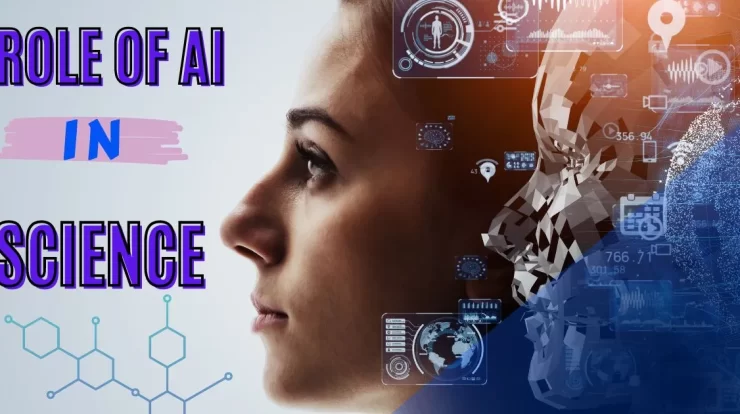
Explore the ethical landscape of AI in web development. Uncover the impact on jobs, ensure fair decisions, and navigate personalized experiences responsibly. Discover the future of responsible AI integration.
Contents
Introduction
AI shapes web development; user empowerment is crucial. Explore strategies for AI-driven web development prioritizing user control. User-centricity is essential for ethical, inclusive, and user-friendly digital experiences in an AI-reliant world.
User-Centric Design
User-centric design lies at the core of empowering users in AI-driven web development. Developers must prioritize creating interfaces that are intuitive and accessible and provide users with a sense of control. This involves understanding user needs and preferences and incorporating feedback into the design process. By placing users at the center, AI systems can enhance user experience while maintaining ethical considerations.
In user-centric design, the focus extends beyond the functionality of the AI system to the overall user journey. Elements such as the layout of web pages, the clarity of navigation, and the simplicity of interactions contribute to a positive user experience. For example, platforms like Netflix utilize user-centric design by offering personalized recommendations based on viewing history, empowering users to discover content tailored to their preferences.
User feedback is invaluable in refining AI-driven systems. Regularly seeking and incorporating user input allows developers to identify pain points, preferences, and areas for improvement. This iterative process ensures that AI systems evolve to meet users’ changing needs and expectations, creating an environment where users feel empowered and heard.
Feedback Mechanisms
Empowering users requires establishing effective feedback mechanisms. AI systems should not operate as black boxes; instead, they should engage users in an ongoing dialogue. Feedback loops enable users to understand how AI algorithms work and provide valuable insights for improvement. These mechanisms contribute to a collaborative relationship between users and developers, ensuring that AI systems align with user expectations and values.
Incorporating feedback mechanisms involves creating channels for user input and actively responding to user suggestions. For instance, social media platforms often allow users to provide feedback on content recommendations, influencing the algorithm’s future suggestions. This level of user involvement enhances the accuracy of AI systems and fosters a sense of ownership among users.
Transparency in communicating how user feedback influences system behavior is equally crucial. When users can see the direct impact of their feedback, they feel more empowered and connected to the AI-driven platform. This transparency builds trust and strengthens the collaborative relationship between developers and users, reinforcing that users are active participants rather than passive consumers.
Real-Life Examples
Real-world examples highlight the impact of user empowerment in AI-driven web development. Consider platforms that allow users to customize their AI-driven experiences, such as personalizing content recommendations or tailoring user interfaces. These examples showcase how user-centric design and feedback mechanisms contribute to a more empowering and personalized digital experience.
Take the example of Spotify, which leverages user feedback to enhance its recommendation algorithms. Users can provide explicit feedback by liking or disliking songs, and the algorithm adapts to these preferences, creating personalized playlists. This approach not only empowers users to curate their listening experience but also showcases the direct influence of user feedback on the system’s behavior.
Another notable example is the customization options in e-commerce platforms like Amazon. Users can actively rate products; the AI algorithm uses this information to recommend similar items. This personalized recommendation system empowers users to discover products tailored to their tastes, creating a more engaging and user-centric shopping experience.
Bias and Unintended Outcomes
One significant area of concern is bias in AI, which can result in unintended and discriminatory outcomes. Examining cases where biased algorithms led to adverse consequences sheds light on the importance of addressing bias as a preventive measure. Understanding these scenarios helps developers anticipate potential pitfalls and implement strategies to minimize unintended outcomes.
Biases in AI systems can emerge from historical data, reflecting and perpetuating societal inequalities. For example, if an AI-driven hiring platform is trained on biased historical hiring data, it may inadvertently favor certain demographics, perpetuating existing disparities in employment opportunities. Recognizing and addressing such biases is essential for preventing unintended consequences that could reinforce or exacerbate societal inequalities.\

Ethical Considerations
Ethical considerations become paramount as developers navigate the complexities of AI-driven web development. Acknowledging the ethical responsibilities associated with developing and deploying AI systems, developers must proactively address issues such as fairness, accountability, and transparency. This proactive approach contributes to minimizing unintended consequences and building trust with users.
Ethical Implications of Job Displacement
AI systems’ replacement of human jobs prompts a critical examination of the ethical implications. Considering the potential social and economic impacts of widespread job losses is crucial. From an ethical standpoint, companies deploying AI in web development must actively address the challenges associated with unemployment, potentially retraining affected workers or creating new opportunities within the organization.
Furthermore, companies must be transparent about their intentions when implementing AI technologies. Open communication regarding the impact on employment allows for a more ethical and collaborative approach. Striking a balance between technological advancement and preserving human livelihoods is key to ensuring that AI adoption in web development aligns with ethical principles.
Consider the ethical implications of facial recognition technology as an example. If an AI-driven facial recognition system exhibits racial bias, it can lead to discriminatory outcomes, affecting individuals from certain ethnicities more than others. Ethical considerations demand that developers actively identify and rectify such biases, ensuring AI systems operate equitably without reinforcing harmful stereotypes.
Decision-Making in Web Development
AI’s increasing role in decision-making across various domains, including web development, raises ethical concerns. This section explores the ethical implications of biased and unfair AI decision-making and discusses strategies to ensure that AI decisions are fair, unbiased, and aligned with ethical standards.
Preventive Measures
To mitigate unintended consequences, developers must adopt preventive measures. This includes rigorous testing, ongoing monitoring, and a commitment to continuous improvement. By incorporating ethical considerations into the development lifecycle, developers can identify potential issues early on and implement measures to prevent unintended consequences from adversely impacting users.
Rigorous testing involves subjecting AI systems to diverse scenarios to uncover potential biases, vulnerabilities, or unintended outcomes. Ongoing monitoring ensures that AI systems remain aligned with ethical guidelines and that any emerging issues are promptly addressed. Continuous improvement involves learning from past experiences and using that knowledge to enhance the robustness and fairness of AI systems over time.
Developers can also employ techniques such as adversarial testing, where the system is intentionally exposed to misleading or biased inputs to evaluate its resilience. By proactively challenging AI systems during development, developers can identify and rectify vulnerabilities before the system is deployed, reducing the risk of unintended consequences.

Challenges in Trust Building
Building trust in AI is challenging, primarily due to the inherent complexity of machine learning algorithms. Users may need clarification or support to engage with systems they perceive as opaque or unpredictable. Addressing these challenges requires a deliberate effort to enhance transparency and provide users with the tools to understand and trust AI-driven processes.
Users often find it challenging to trust AI systems when they need help comprehending how decisions are made. This lack of transparency can lead to skepticism and reluctance to adopt AI-driven technologies. Recognizing this challenge, developers must prioritize transparency and provide users with clear insights into how AI algorithms operate and make decisions.
Explainable AI Solutions
Explainable AI, or XAI, is pivotal in addressing trust-building challenges. This involves designing AI systems that provide clear and understandable explanations for their decisions. By incorporating explainability into the design process, developers can empower users to comprehend how AI algorithms work, fostering a sense of control and trust.
Explainable AI goes beyond revealing the decision-making process; it also encompasses providing context and justification for AI-driven outcomes. For instance, in a healthcare AI system assisting with medical diagnoses, explainability might involve indicating the diagnosis and providing information about the key factors influencing the decision.
Applications
Examples of successful implementations of explainable AI in web development demonstrate its impact on user trust. Platforms that offer transparent explanations for personalized recommendations or decision-making processes showcase the effectiveness of explainable AI in building trust. These applications underscore the importance of transparency as a fundamental element of user empowerment in AI-driven web development.
Consider the case of a financial advisory platform that uses AI to recommend investment strategies. The platform enhances user understanding and trust by explaining the factors influencing investment suggestions, such as market trends, risk assessments, and historical performance data. Users can make more informed decisions, knowing the rationale behind AI-driven recommendations.
Another notable example is in the realm of cybersecurity. AI-driven systems that detect and respond to potential security threats can instill trust by explaining the basis for flagging specific activities as potential risks. This transparency empowers users to understand the security measures and fosters collaboration between users and the AI system in safeguarding digital assets.
Conclusion
In conclusion, prioritizing web development, addressing unintended consequences, and leveraging explainable AI are essential components of responsible AI-driven web development. By focusing on these aspects, developers can create digital environments that harness AI’s power and prioritize users’ needs, preferences, and trust.





